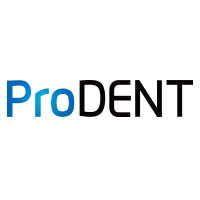Hygienists, Dentists and Diode Lasers the Perfect Trifecta in Dentistry Posted on 8 Nov 23:02 , 0 comments
Hygienists, Dentists and Diode Lasers the Perfect Trifecta in Dentistry
Stephanie Lodding, RDH
Many dental practices have a diode laser sitting on a shelf
because the office was never properly trained or it was never properly integrated
into the dentist’s daily workflow. If you have a diode laser collecting dust in your practice,
today is your day to make a change! Empowering your hygienists by encouraging them
to use the equipment is a great place to start making that investment pay off.
However, while laser hygiene has been a huge benefit to our practice, not every state allows hygienists
to use lasers. Before creating a laser hygiene program, the first step should be checking your state
bylaws to get the latest information on the eligibility of hygienists to use diode lasers in their practice
of hygiene. If hygienists are permitted to use lasers in your state, getting your team trained in laser
dentistry can be a great way to boost your staff’s morale and build your practice.
There are many trainers that can certify your team on site at your practice. You also can contact
either the Academy of Laser Dentistry or the World Clinical Laser Institute for certification training.
It is important for you to not only attend a course at a major dental meeting but also to get your dental
team certified. This will not only ensure the safety of your patients, but it will give your team the
confidence they need to be successful in co-diagnosis and use of the diode laser.
Hygienists who have taken a proficiency course will feel empowered and be less likely to let this great
technology collect dust. Lower powered diode lasers in the hands of a trained hygienist can be used
for sulcular debridement as well as for the treatment of Cold Sores, Canker sores, and many other
oral lesions.
Patients with painful sores from cancer treatment also can find instant relief with laser treatment.
These procedures can be amazing practice builders from internal referrals. When you get your patients
out of pain, or stop an unsightly cold sore from breaking out or get it to heal immediately, patients will
tell many others about the amazing painless treatment you provided.
Biostimulation for TMD pain or inflammation in the TMJ joint is the most amazing treatment to get patients
out of pain, and I’ve found this can be accomplished with a laser providing at least 6 Watts of power.
It is also great to have a whitening wand attachment for your laser as this can become an additional
practice builder.
Personally, I have had the privilege of using many diode lasers over the years. I’ve found that for most
laser hygiene procedures it is not critical to choose a high powered laser, but if the office is going to be
sharing the laser between the dentist and the hygiene team, or you are interested in providing
biostimulation for paint relief, it is important to consider the power. If your existing laser is not up
to these tasks, it does not make it obsolete, but it does limit the billable services that can be performed.
If you are shopping for a new laser, it helps to know how it will be used because not all lasers are
created equally. Dentists who would like to do procedures with the laser need to be aware of
how important it is to have great ability to cut. Going booth to booth or registering for a laser workshop
at a tradeshow to try out available lasers can be a critical step when making a laser purchasing decision.
It is important to get a feel for the laser you will be purchasing because you don’t want to just bring a
glorified electrosurge into your office. Instead you want to add laser technology that can promote faster
healing, cut with no charring, and provide many procedures with virtually no pain.
When it is put to use on a regular basis, the diode laser can bring amazing success into a practice.
Empowering the hygienist to be the lead person when it comes to researching different laser
technologies can be a great start. Let the hygiene team be a part of the decision process to implement
lasers, and make sure they’re involved in creating the business plan mapping out how the laser
will be used in order to ensure the ROI of your investment.

